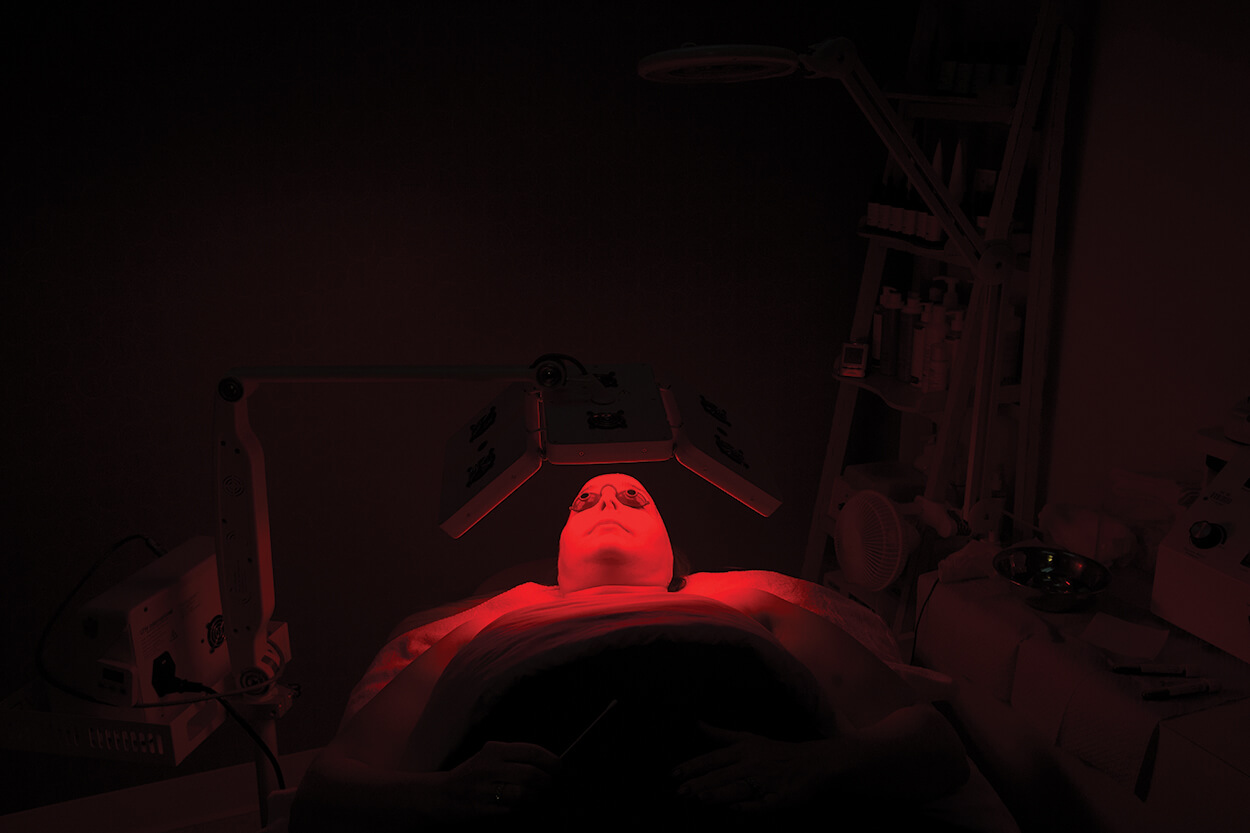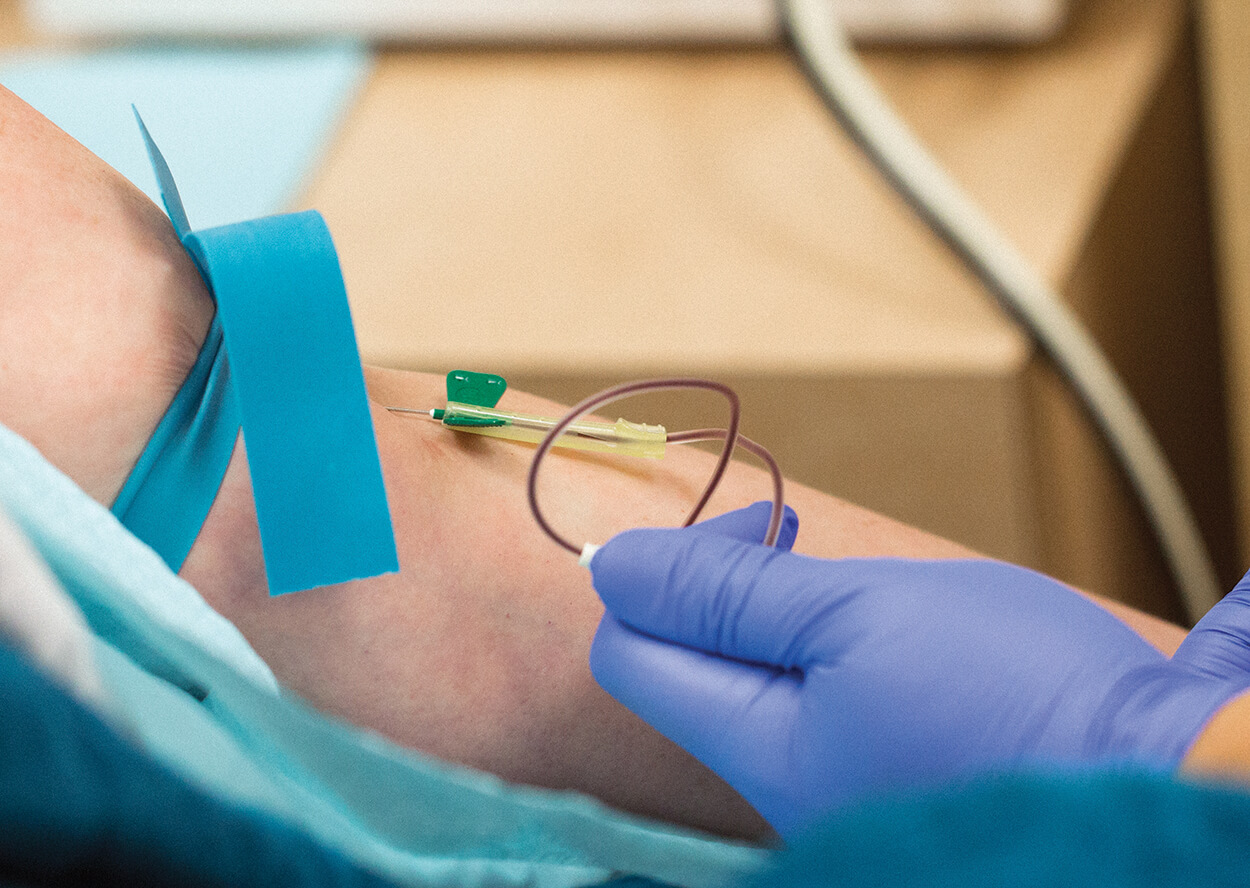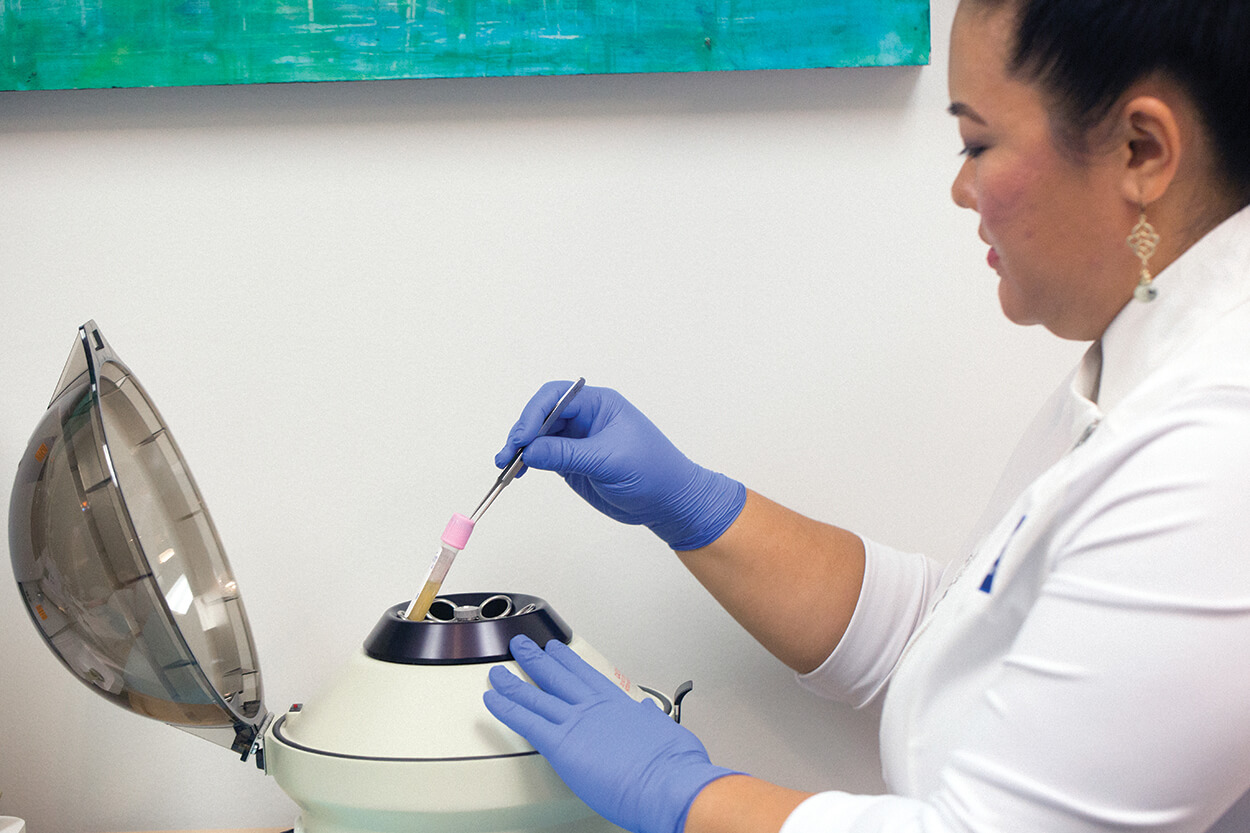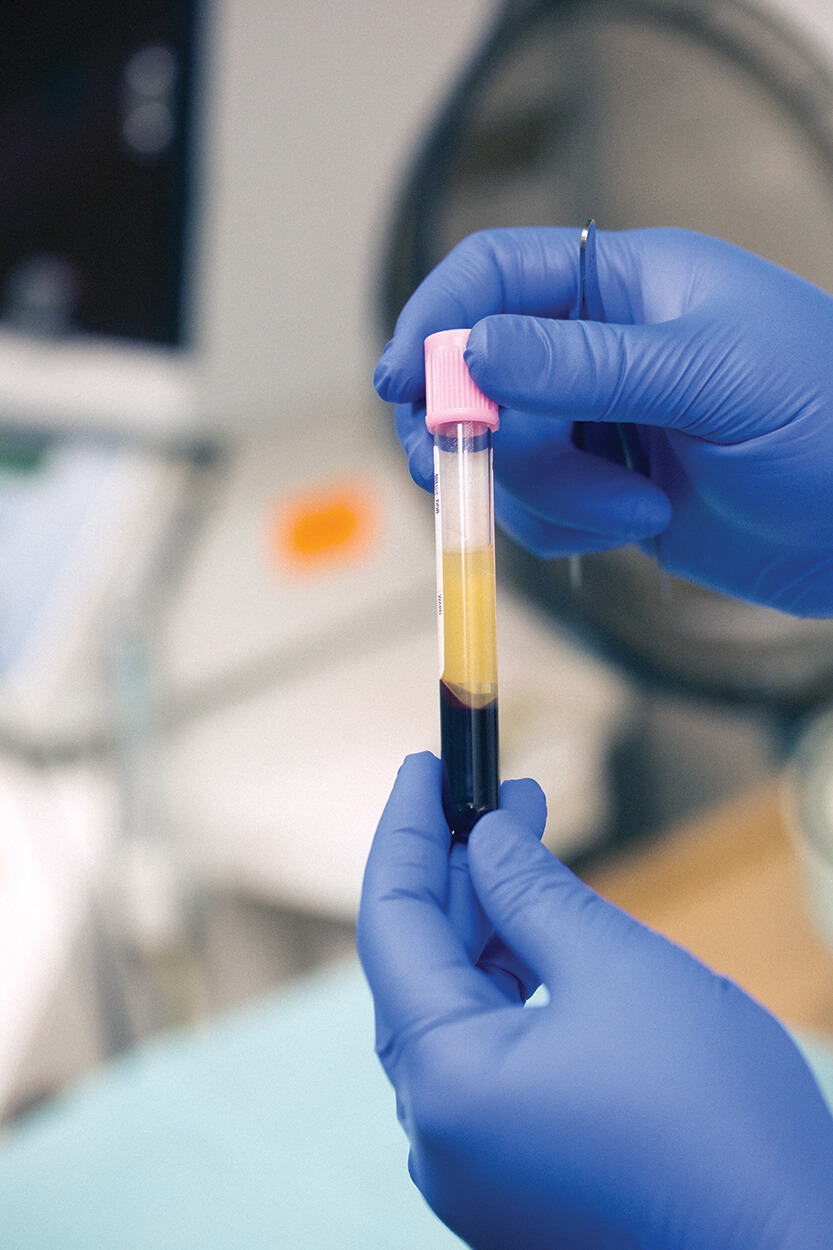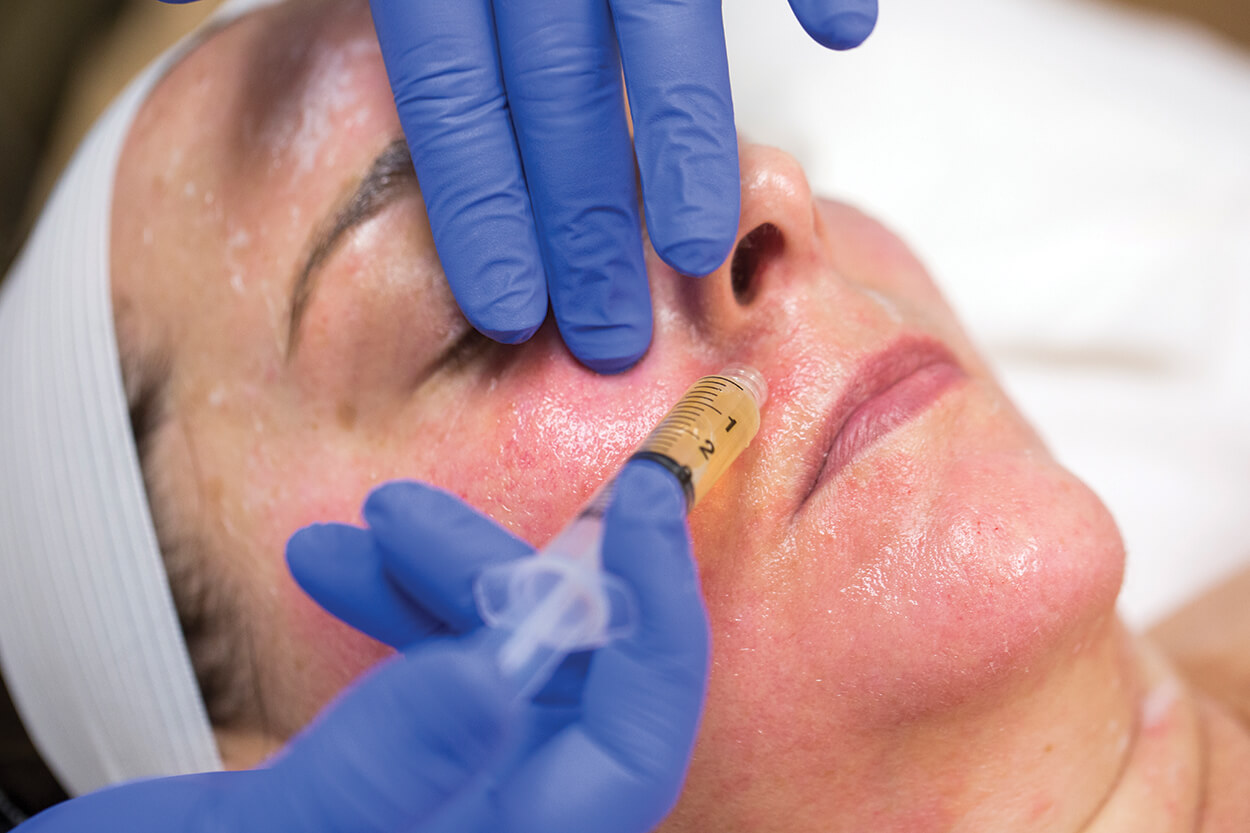Vampire Facial: Not that Bloody
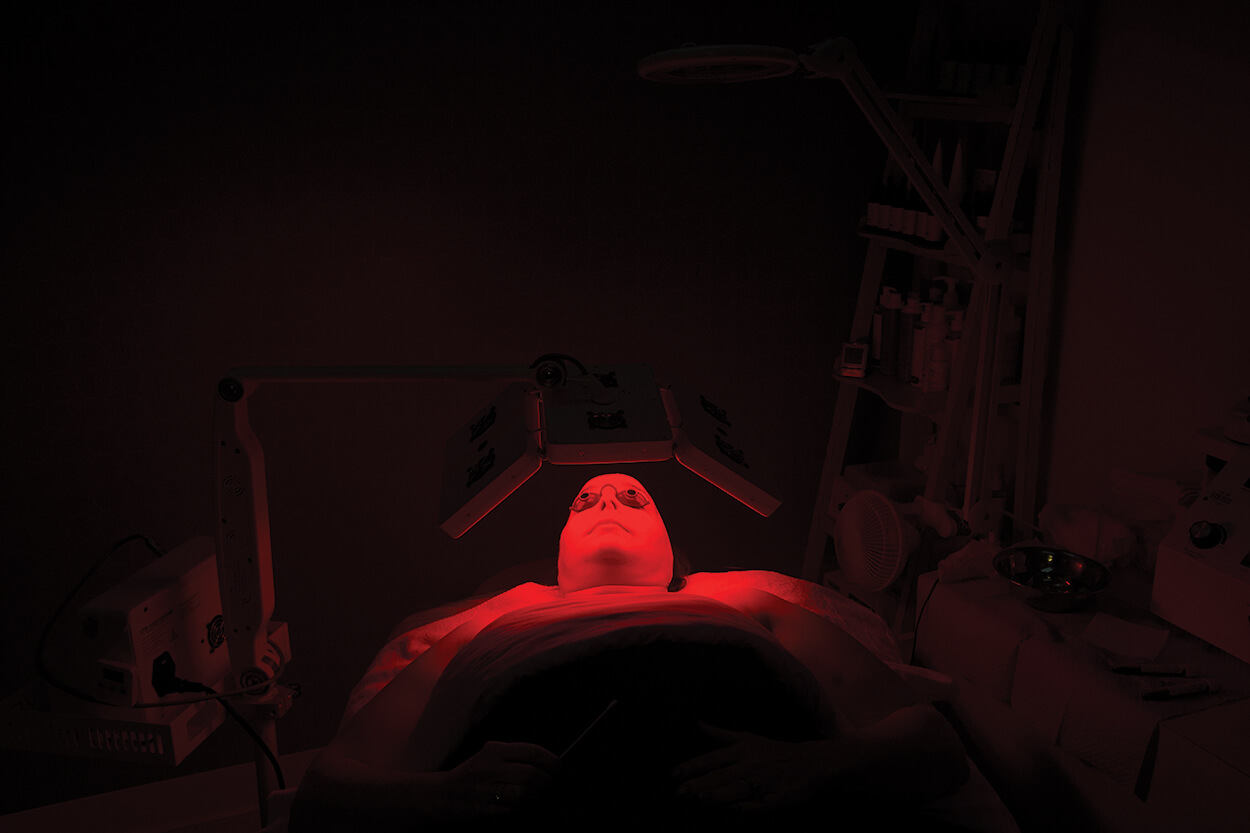
The vampire facial got its first 15 minutes of fame when reality television star Kim Kardashian posted a dramatic selfie on Instagram directly after the treatment. Her face, which looked raw, was covered with tiny beads of blood.
More recently, the elective cosmetic procedure made headlines again, after a client at a spa in a New Mexico strip mall developed an infection that may have been the result of unsafe practices.
But in a sterile environment with trained professionals, the vampire facial—also known as a platelet rich plasma facial—can be an effective way to rejuvenate and smooth out tired or troubled skin.
Kim Chang, an aesthetician and phlebotomist with more than 14 years of experience, performs three or four vampire facials a week at Baylor College of Medicine’s Aesthetics Studio, located in the Jamail Specialty Care Center.
“As far as what I can do as an aesthetician, this is my most effective treatment,” Chang said. “It can help with acne scarring by evening out hyper-pigmentation and it also helps with anti-aging in terms of reducing frown lines and marionette lines. But it doesn’t necessarily help with wrinkles. We can’t help what is underneath, but we can help with the collagen and it’s all about the collagen.”
The vampire facial involves injecting part of the patient’s own blood directly into the face. Key to the treatment is platelet-rich plasma (PRP), the yellow-colored portion of blood that remains after red and white blood cells and other components have been removed. PRP helps blood clot and contains proteins that support cell growth. By stimulating collagen production, PRP helps rejuvenate aging skin by giving it more elasticity.
Chang begins the 90-minute procedure with a deep cleansing of the face and the application of numbing cream. During the numbing process, Chang draws blood from the patient’s arm and then places two vials of blood in a centrifuge for 10 minutes to isolate the PRP. Chang then removes the numbing cream from the patient’s face, applies some PRP to the face and then injects the plasma into the skin with a microneedling machine.
“The microneedling machine is like a pen that has 12 microneedles at the tip,” Chang explained. “They go up and down on the skin, creating channels for the PRP to penetrate deeper into the skin.”
The punctures create localized trauma that, in turn, helps the to the skin’s surface by microneedling, and the amount is minimal.
“A lot of people expect vampire facials to look like Kim Kardashian’s, but if they are done properly, they really shouldn’t look like that and you certainly shouldn’t be putting a towel by your face right after,” Chang said. “The PRP goes on clear so there is hardly any blood at all.”
A 2016 Turkish study published in Annals of Dermatology found evidence of new collagen formation using PRP and concluded that even a single PRP application could be considered an effective and safe procedure for facial skin rejuvenation.
Once the treatment is complete, Chang applies a soothing cream that contains stem cells and then sunscreen to the patient’s face. She compares the treatment to a chemical peel or a laser in terms of inducing local trauma to boost collagen. To further accelerate the healing process for patients, Chang often uses an LED light. For about 20 minutes post-procedure, patients remain on the treatment table under a tri-paneled lamp. Infrared light is known to accelerate skin recovery and red light is known to reduce inflammation.
Sabrea Munz, one of Chang’s patients, has been elated with the results of her vampire facials. In the past year, she has had the procedure done three times.
“My skin looks really healthy and has a nice glow that lasts for about four months after the procedure,” Munz said. “Before I got this treatment done, I only did the microneedling and the results have been night and day. Adding the PRP makes a huge difference.”
Edward Reece, M.D., associate professor and chief of adult plastic surgery in the Michael E. DeBakey Department of Surgery at Baylor College of Medicine, said the vampire facial is a great option for patients.
“It is minimally invasive and can be done with very little down-time,” Reece said. “It provides youthful- looking skin, so I encourage our patients to look into it.”
But at the Baylor Dermatology Clinic, Chang has had to turn some patients away.
“Many of our patients come here because they know that we will be a lot more compliant with everything—disinfecting things, making sure we have their best interest in mind,” Chang said. “I have turned down patients who are on blood thinners, recent cancer survivors—they may not heal well.”
Interested patients should also understand that because of the punctures in the skin, there is a risk of infection.
“There is a moderate risk of infection with this treatment,” Chang said. “It’s not high. It’s not like a surgery where you are opening the body up, but it is moderate because when you are doing any type of puncturing to the skin, you are exposing it to environmental factors so, therefore, you can always get an infection.”
After recovery, patients are advised to stay away from murky waters for at least one week.
“You can’t go put your face into Buffalo Bayou or go swimming in Galveston or jump in your hot tub,” Chang said. “Anything that deals with water, humidity or sweating can always pose a threat of infection.”
A vampire facial at the Baylor clinic costs $750—or $500 per facial with the purchase of three.
“If you are looking for shinier, more youthful skin, this is a really good option,” Reece said.

